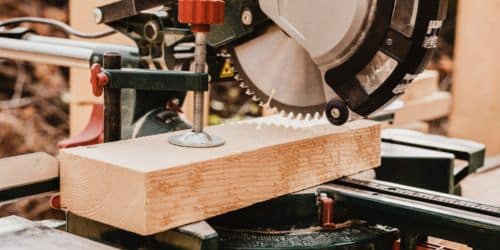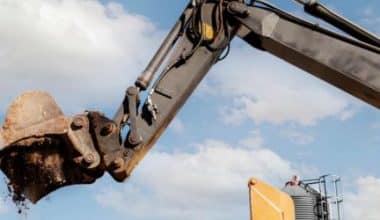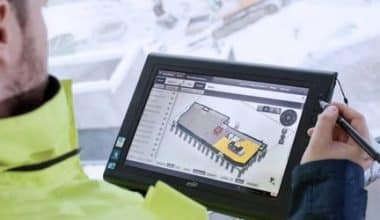Saws, one of the most powerful and versatile tools, whether it’s for construction, woodworking, or a DIY enthusiast. Customizing your saw can take your work to the next level. It enables you to personalize it according to your needs, thereby optimally enhancing productivity. But how exactly is a custom saw made? Now take a deep dive into the fascinating world of custom saw manufacturing.
Types of Custom Saws
The first step in formulating the perfect saw for your needs is understanding the different types available. For instance, Pacific Trail Manufacturing Inc. offers a range of custom saws, each with unique characteristics that cater to specific applications. The Circular Saw is a popular choice among woodworkers; its increased cutting accuracy makes it a go-to for precise cuts.
Next comes the Band Saw, known for its flexibility and ability to achieve intricate curved cuts. Table Saws are another interesting breed; offering amazing cross-cutting capabilities with precision unmatched by other types.
You also have the option of Track Saws which deliver precise straight cuts for sheet materials like plywood. And last but not least, Miter Saws that specialize in exact miter cuts and cross cuts and often come equipped with laser guiding systems for extra precision.
The idea behind customization is to choose a type that fits your needs, then refine it further to suit your process perfectly.
Custom Saw Manufacturing Process
After deciding on the saw type, it’s time to take into consideration the manufacturing process – which is as crucial as the endpoint. It all starts with a design team where skilled engineers work on creating blueprints based on customer requirements.
The next stage involves being handed over to the production team who take these blueprints and convert them into tangible products. Here, high grade steel is cut, milled and turned through a series of technically advanced machines.
The saw then gets assembled using top-tier equipment to ensure longevity and resilience. It’s an arduous process, but this is what differentiation is all about – a carefully assembled solution rather than a mass-produced product.
Once the saw is assembled, it undergoes testing for functionality before it goes out for dispatch. This practice ensures that there are no last-minute obstacles preventing you from receiving a flawless tool.
Materials in Custom Saw Manufacturing
The heart of a great custom saw lies in the materials used during its manufacture. The blade’s material can make or break your sawing experience. Most commonly, High-Speed Steel (HSS) is used, known for its resistance to heat and durability.
Still, there are alternatives such as Carbide-Tipped blades. With their hard-wearing properties, they last longer than HSS blades but are also more expensive. Depending on your usage pattern and frequency, you might find one more suited to your requirements than the other.
The handle or the grip of the saw should also be given equal importance as it affects user comfort and safety. Materials ranging from plastic, rubber to wood are used with key focus on strength and comfortability in long-term use.
Deciding on these materials isn’t an easy task; however, good manufacturers will provide apt guidance according to your intended use.
Safety Features of Custom Saws
Safety cannot be compromised at any cost – especially when working with power tools like saws. One common feature found in most custom saws is an auto-off switch or “dead-man’s” switch that immediately turns the saw off if it drops from your hand.
Then, there’s the blade guard, a protective casing that reduces the potential risk of accidents. Advanced custom saws also incorporate an electronic safety system that detects skin contact and automatically stops the blade within milliseconds.
Additionally, anti-vibration handles significantly reduce physical discomfort and lower the risk of repetitive strain injuries. Notably, safety mechanisms for custom saws are always evolving with technology, bearing testimony to the importance manufacturers place on user safety during tool design.
Quality Control in Custom Saw Manufacturing
Quality control is paramount in custom saw manufacturing. It’s not just about assembling high-grade materials; a series of checks and balances have to be in place to ensure a reliable end product.
The American National Standards Institute (ANSI) has established standards for power tools, including saws. Adherence to these criteria ensures that your custom saw can perform optimally while maintaining safety standards.
In addition to these regulatory measures, rigorous testing methods employed by certain manufacturers ensure that all components are functioning as intended before it reaches the user.
Last but not least, often elements such as customer feedback are taken into account for continuous improvements. In essence, quality control is a full-circle process that keeps checks right from design to post-sales usage.
Selecting the Right Custom Saw
Choosing the perfect custom saw is a task that requires a deep understanding of your specific needs. The beginning of this process is identifying your requirements, such as precision in intricate designs or efficient cross-cutting. There are numerous options to select from like the reliable Circular Saw or the adaptable Band Saw.
Selecting a suitable saw isn’t just about matching tasks with tool capabilities; it goes beyond – assessing the type of material you commonly work with, the design complexities involved, and frequency of usage all play key roles.
For instance, working with wood and requiring detailed, artistic cuts would naturally lead you towards a Jigsaw or Band Saw. However, if precision straight cuts on plywood sheets or thick timbers are more your speed, a Track Saw could be your best companion.
The bottom line is – choosing your custom saw must be a careful decision based on a clear understanding of your work. Most reputed manufacturers like Pacific Trail Manufacturing Inc. offer expert advice to assist you in making the right choice.
Cost Implications of Custom Saws
The cost factor in procuring custom saws is undeniably significant. Unlike mass-produced options, custom saws carry higher price tags due to the intensive effort and high-quality materials involved in their production.
However, it’s crucial to assess this expenditure not as an isolated investment but in terms of long-term value. Premium materials promise durability which translates to lower replacement costs over time. You also gain from enhanced productivity and precision that only bespoke tools can offer.
Investing in higher-end blades made from carbide-tipped materials might initially seem steep; however, longer blade life and sustained performance justify this expenditure over time. Similarly, paying a little extra for ergonomic designs or enhanced safety features is unquestionably a wise investment considering reduced injury risk and improved user comfort.
Ultimately, while costs of custom saws might be higher upfront, their superior performance, longevity and catered utility position them as a valuable investment in the long run.
Maintenance of Custom Saws
Just as important as it’s to select the right saw and consider its cost implications, attending to the maintenance of your custom saw is equally crucial. Regular upkeep ensures your tool stays at optimum performance level and extends its lifespan.
Cleaning after each use is a fundamental step; accumulation of sawdust and debris can gradually wear down your saw’s efficiency. Furthermore, inspecting the blades for any damage or dullness can prevent unexpected hiccups in your work.
In terms of blade care, sharpening or replacing blades when needed can also enhance the overall performance of your saw. For electric power tools, additional precautions include occasional motor checks and ensuring proper cord care.
To assist in maintaining your custom saw at its peak condition, some manufacturers offer comprehensive care kits and instruction leaflets. These measures not only increase your tool’s durability but also ensure all safety standards are adhered to consistently.
Impact of Technology on Custom Saw Manufacturing
Technology has revolutionized every sphere of manufacturing, and custom saw production is no exception. Advanced CAD software enables designers to create precise blueprints that take into account the minutest customer requirements. This technology-backed planning stage significantly reduces error margin and hastens the manufacturing process.
Manufacturing processes themselves have seen leaps in advancements – CNC machines, automated welding and laser-cutting are all examples of tech-driven techniques leading to precision production with reduced waste.
Beyond production stages, technology impacts safety features in custom saws too. From laser guiding systems for exact cuts to electronic safety mechanisms that detect skin contact – these tech-enabled features are redefining how safe people can be around powerful tools like saws.
In a nutshell, technology’s influence on custom saw manufacturing is profound and continues to set new standards in terms of precision, safety, and ease of use.
Future Trends in Custom Saw Manufacturing
Custom saw manufacturing doesn’t cease to evolve; it’s a continual process of refinement driven by customer requirements and emerging technology. One trend we’re witnessing is the rising demand for eco-friendly tools, leading manufacturers to explore sustainable materials without compromising on tool efficiency or durability.
We also anticipate further advancements in the realm of safety. As users become more safety-conscious, manufacturers are innovating faster and smarter mechanisms to prevent accidents. Biometric safety systems or smart sensors that provide real-time feedback on tool handling are no longer mere concepts but serious pathways to safer tool usage.
Digital integration is another trend set to transform custom saw manufacturing. Imagine ordering your custom saw straight from an app or having a digital twin of your saw for enhanced performance evaluation. The shifts brought about by Industry 4.0 promise exciting times ahead for this sector.
All things considered, the future of custom saw manufacturing certainly seems geared towards personalization, user-centric safety measures and sustainable practices – all driven by burgeoning technology.
Concluding Thoughts
Custom saw manufacturing truly represents the epitome of design innovation and craftsmanship in the world of power tools. Whether it’s selecting the right type, considering cost implications or maintaining your customized tool – every step requires detailed attention and informed decisions.
With technology breaching new frontiers in this sector and fostering future trends leaning towards personalization and sustainable practices – custom saws are a symbol of progress and precision craftsmanship you can eagerly look forward to.






